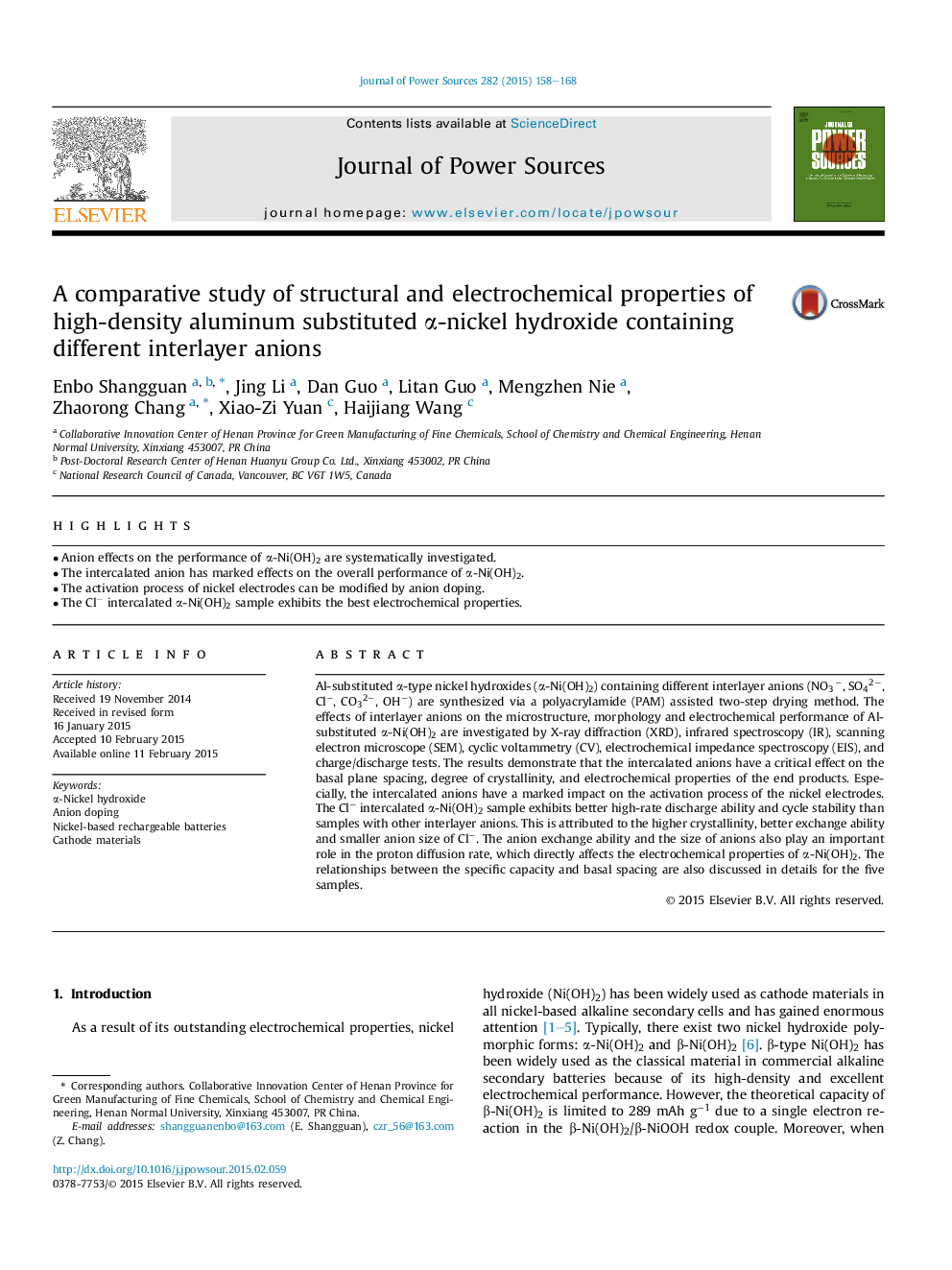| Article ID | Journal | Published Year | Pages | File Type |
|---|---|---|---|---|
| 7733278 | Journal of Power Sources | 2015 | 11 Pages |
Abstract
Al-substituted α-type nickel hydroxides (α-Ni(OH)2) containing different interlayer anions (NO3â, SO42â, Clâ, CO32â, OHâ) are synthesized via a polyacrylamide (PAM) assisted two-step drying method. The effects of interlayer anions on the microstructure, morphology and electrochemical performance of Al-substituted α-Ni(OH)2 are investigated by X-ray diffraction (XRD), infrared spectroscopy (IR), scanning electron microscope (SEM), cyclic voltammetry (CV), electrochemical impedance spectroscopy (EIS), and charge/discharge tests. The results demonstrate that the intercalated anions have a critical effect on the basal plane spacing, degree of crystallinity, and electrochemical properties of the end products. Especially, the intercalated anions have a marked impact on the activation process of the nickel electrodes. The Clâ intercalated α-Ni(OH)2 sample exhibits better high-rate discharge ability and cycle stability than samples with other interlayer anions. This is attributed to the higher crystallinity, better exchange ability and smaller anion size of Clâ. The anion exchange ability and the size of anions also play an important role in the proton diffusion rate, which directly affects the electrochemical properties of α-Ni(OH)2. The relationships between the specific capacity and basal spacing are also discussed in details for the five samples.
Related Topics
Physical Sciences and Engineering
Chemistry
Electrochemistry
Authors
Enbo Shangguan, Jing Li, Dan Guo, Litan Guo, Mengzhen Nie, Zhaorong Chang, Xiao-Zi Yuan, Haijiang Wang,
